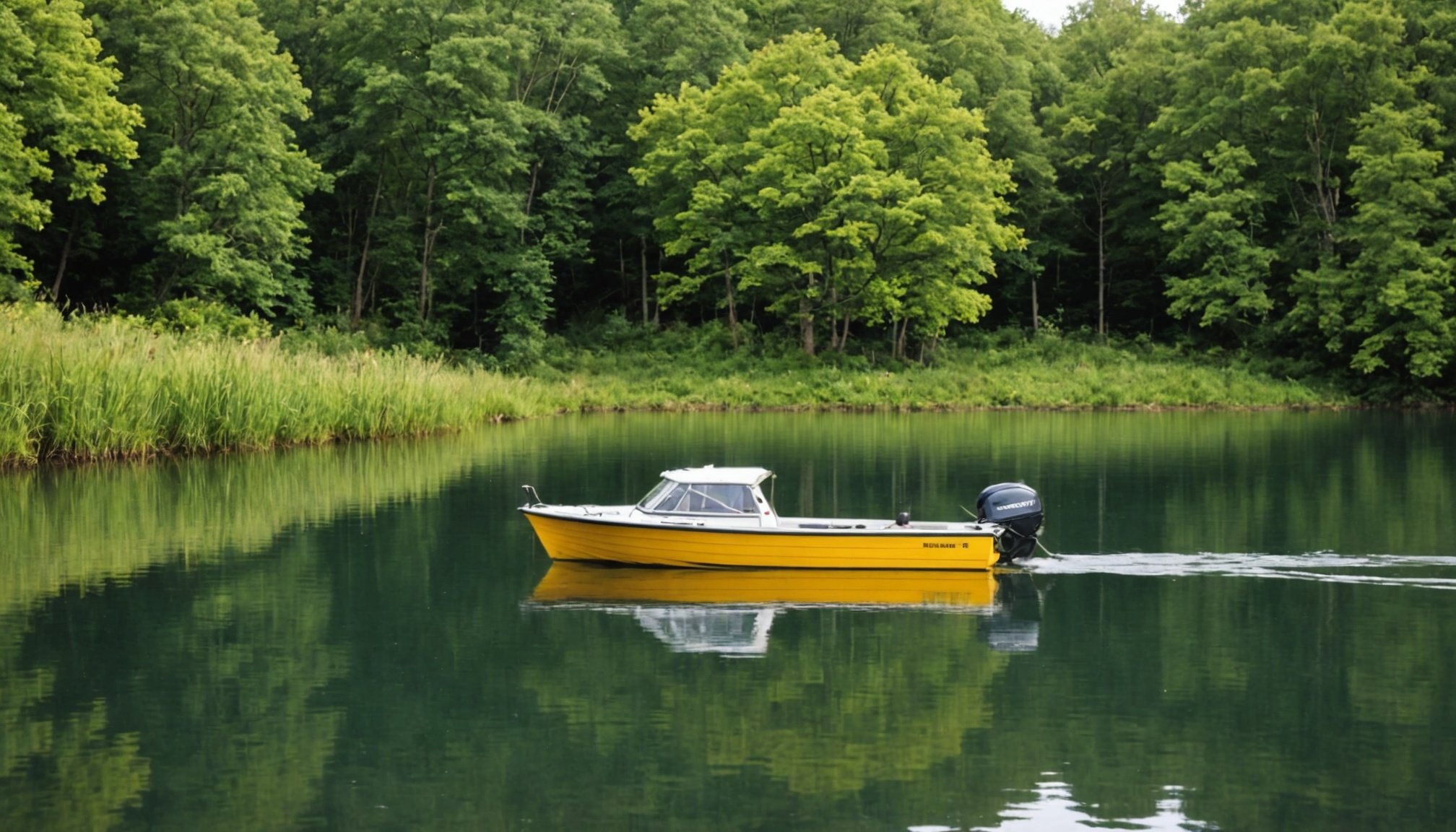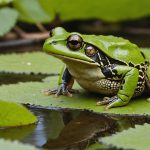Understanding the Impact of Boating on Freshwater Ecosystems
Boating activities can profoundly impact freshwater ecosystems. As vessels navigate through these waters, they can disrupt delicate habitats and endanger aquatic wildlife. Noise pollution, chemical runoff, and physical alterations to the environment are common concerns linked to boating. For instance, propellers can damage the vegetation and bedrock of these habitats, which can further lead to erosion and sedimentation.
Boating can introduce pollutants like fuel residues and oil, directly affecting the health of the water and its inhabitants. Such chemical runoff often results in decreased water quality, adversely affecting the biodiversity of freshwater ecosystems. Key statistics reveal that boating accounts for a significant percentage of external pollutants in many freshwater bodies.
This might interest you : Balancing innovation and nature: essential tech strategies for uk farmers to safeguard livestock while coexisting with badgers
The relationship between boating practices and ecosystem health cannot be overstated. Practices like overfishing, anchoring in sensitive areas, and careless waste disposal further strain these ecosystems. Sustainable boating practices are necessary to ensure the preservation of these habitats. Implementing these actions can help maintain the rich biodiversity that freshwater ecosystems support.
By understanding the environmental effects of boating, enthusiasts and policymakers can collaboratively work towards minimizing harm and preserving these crucial habitats for future generations.
This might interest you : Transforming British Urban Gardens: Cutting-Edge Solutions to Revive Endangered Pollinators
Best Practices for Sustainable Boating
Engaging in eco-friendly boating practices is essential for protecting our waterways and marine life. Below are critical considerations for sustainable boating.
Planning Your Trip
When planning a boating trip, consider the environmental impact of your route. Opt for areas that allow for minimal interference with local ecosystems. Using charts to avoid sensitive habitats can help reduce your ecological footprint. It’s crucial to check local guidelines and regulations to ensure you’re compliant with sustainable boating tips.
Choosing the Right Equipment
Selecting the appropriate equipment is key in reducing your environmental impact. Prioritize choosing eco-friendly boating equipment; for example, using electric or more fuel-efficient motors can significantly cut down emissions. Solar-powered gadgets are now increasingly accessible, offering sustainable alternatives to traditional equipment. Focus on gear that’s designed to be both durable and environmentally responsible.
Minimizing Waste
Waste management is a significant component of eco-friendly boating practices. Implement a plan to bring back all trash to dock, ensuring nothing is left behind. Utilize reusable containers and biodegradable products whenever possible to reduce waste production. Lastly, thoroughly vet any on-board disposal systems to ensure they meet environmental standards, fortifying your commitment to sustainable boating.
Legal Regulations and Guidelines for Boating
Navigating the waters in the UK involves adhering to a robust framework of boating regulations designed to ensure safety and protect the natural environment. One key aspect of these laws is the focus on conservation, aiming to preserve our freshwater ecosystems. Compliance not only ensures safety but also contributes to the broader conservation efforts essential for maintaining aquatic biodiversity.
In the UK, specific legal requirements govern boating activities. These include mandatory licenses for certain vessels and adherence to speed limits in designated zones. Particular attention is paid to conserving freshwater habitats, prohibiting activities that might harm these sensitive areas. Such conservation laws are crucial for preserving the delicate balance of aquatic ecosystems and ensuring sustainable use of water bodies.
For boating enthusiasts seeking to stay informed, numerous resources are available to access up-to-date regulations. The government’s maritime and waterways websites offer comprehensive guidelines and any changes in legal requirements. Remaining informed and vigilant in complying with these laws is both a legal obligation and a proactive step towards fostering a sustainable recreational environment.
Techniques for Protecting Aquatic Wildlife
Protecting aquatic wildlife is crucial, and with a few simple adjustments, one can significantly contribute to wildlife conservation. These techniques not only preserve the environment but also enhance personal experiences on the water.
Avoiding Sensitive Areas
Identifying and avoiding sensitive aquatic habitats is a critical first step. Wildlife conservation can be promoted by recognising these areas through maps or local environmental authorities and ensuring boats maintain an appropriate distance. By respecting marked zones and being aware of breeding or feeding areas, one can minimize disturbances effectively, preserving the delicate ecosystems of these regions.
Reducing Noise Pollution
Minimizing noise pollution is essential in reducing stress on aquatic wildlife. Boating practices should include maintaining a steady speed to avoid unnecessary engine noise and embracing technologies that quieten boat engines when possible. Reducing music levels and avoiding unnecessary honking also contributes to a more serene and less disruptive environment for aquatic creatures.
Responsible Wildlife Watching
Practicing responsible wildlife watching ensures we respect the natural behaviour of the animals. This can be done by keeping a safe distance, using binoculars for better viewing rather than moving closer, and certainly avoiding feeding wildlife. Such practices not only protect the animals but also afford a more authentic and rewarding observation experience.
Eco-Conscious Boating Equipment Recommendations
Navigating the waters doesn’t have to harm the environment. With the right sustainable boating gear, you can protect marine ecosystems while enjoying your time at sea. Nowadays, the market offers a range of eco-friendly products designed to minimise your environmental footprint. Using these products can significantly contribute to conservation efforts.
Many brands are now focusing on providing technology for conservation. Solar-powered boats, for instance, harness solar power, reducing reliance on fossil fuels. This not only cuts emissions but also offers quieter operation, enhancing the boating experience. Sustainable materials are also making waves. From recyclable sails to bamboo-based furnishings, these materials are designed to last longer while causing minimal environmental impact.
Here’s a look at some standout products:
- Bio-Based Antifouling Paints: These are less toxic alternatives to protect the hull from marine organisms.
- Electric Propulsion Systems: They offer silent operation and reduced carbon footprint.
- Biodegradable Cleaning Supplies: Essential for maintaining your vessel without polluting the water.
By choosing sustainable boating gear, you actively support eco-conscious boating. It’s about making informed decisions that benefit both your adventure and the environment.
Engaging in Conservation Efforts
In the realm of community conservation, boaters hold a unique position to make a real impact. One of the most effective ways is to participate in local conservation initiatives. Many boating clubs frequently organise events focused on promoting environmental sustainability. They understand the significance of conserving waterways, as their activities heavily rely on these natural resources. By joining boating clubs, enthusiasts not only get the thrill of shared adventures but also partake in purposeful restoration projects.
These clubs often encourage sailors to engage in actions such as debris clean-ups, fostering a cleaner and safer environment for both marine life and recreational activities. Restoration projects led by the boating community have proven successful in numerous instances. A notable example includes the rejuvenation of local oyster beds, which play a crucial role in filtering and maintaining clear water. Such initiatives not only enhance the natural ecosystem but also strengthen community bonds, showing how collective efforts lead to tangible benefits.
Moreover, participating in these activities provides boaters with the opportunity to develop a deeper understanding of their surroundings, ensuring that they become stewards of the environment. By directly contributing to these projects, boaters can enjoy the waters while preserving their beauty for future generations.











